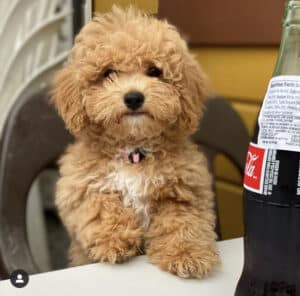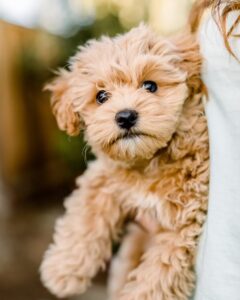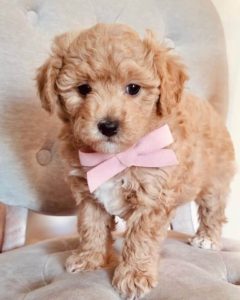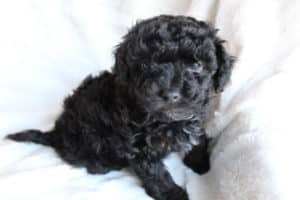
What is the Best Way to Prevent Havapoo Health Issues?
Preventing health issues in Havapoos is essential for their well-being. This post explores effective strategies and practices to keep your furry friend healthy and happy.

“The Havapoo, also known as the Havadoodle or Havanesepoo, is a crossbreed between the Havanese and the Poodle. While this delightful mix brings the best of both breeds, it’s important to note that the Havapoo is not a purebred dog. This is because it results from combining the Havanese with the standard, miniature, or toy poodle, leading to diverse characteristics and appearances.
Unlike purebred dogs, the Havapoo isn’t officially recognized by major breed clubs such as the American Kennel Club (AKC). Consequently, they are not eligible to enter most traditional dog shows, which often require official breed status for participation.
Despite this, Havapoos are cherished for their affectionate nature and adaptability, making them a popular choice for families and individuals alike.”
Here are some important facts and information about the breed:
The Havapoo, a delightful blend of the Havanese and Poodle, represents a relatively modern approach in canine breeding. Though this mix may have occurred naturally over the years, it was in the 1980s that breeders began purposefully pairing these two breeds. The rise of designer dogs during this time catalyzed the Havapoo’s intentional breeding.
It’s generally believed that the Havapoo rose to popularity in the U.S. Over the past 20–30 years, coinciding with the “doodle” craze that involved mixing various purebred dogs with poodles. This trend was fueled by the desire to combine the best traits of different breeds, such as the Havanese’s affectionate, playful nature and the Poodle’s hypoallergenic coat and athleticism.
As with any hybrid breed, it’s crucial to approach Havapoo breeders with caution due to the prevalence of puppy mills in the designer dog market. Be particularly wary of breeders who advertise mini or “teacup” Havapoos as distinct breeds. Unscrupulous breeders often exploit popular crossbreeds, sometimes breeding them in poor conditions without adequate care.
When searching for your ideal furry companion, be mindful of these warning signs to avoid falling into a puppy mill scheme:
Being informed and vigilant will help ensure you bring home a healthy and ethically bred Havapoo.
The Havapoo emerged as part of the broader designer dog trend, where breeders began intentionally mixing purebred dogs with poodles to create popular hybrid breeds.
Buyers should be cautious if breeders offer multiple mixed breeds, guarantee wait times for puppies, offer to ship puppies, or lack clear contact details.
A significant risk is purchasing from puppy mills, which often operate without regard for ethical breeding standards or the wellbeing of the dogs.
The Havapoo became appealing due to its combination of the Havanese’s charming and playful nature with the Poodle’s hypoallergenic coat and agility.
The Havapoo gained popularity in the United States over the past 20 to 30 years, coinciding with the surge in interest for “doodle” mixes.
The goal was to combine the best traits of both parent breeds: the affectionate and playful nature of the Havanese with the intelligence and hypoallergenic coat of the Poodle. Additionally, breeders hoped to reduce some health concerns commonly seen in purebreds.
Taking the time to evaluate your lifestyle will help ensure your future companion is a perfect match. When in doubt, spend time with Havapoos at reputable rescues or speak to experienced breeders who can offer further insights.
Despite their popularity and charming attributes, the Havapoo, like other crossbreeds, has not attained recognition from major kennel clubs like the American Kennel Club (AKC). However, this does little to diminish their appeal as loving and engaging companions.
Havapoos are small dogs, typically weighing between 8 and 20 pounds and standing between 8 and 14 inches tall at the shoulder. However, their size can vary depending on the type of Poodle parent. When a Havanese is crossed with a miniature Poodle, offspring often reach 10 to 15 inches in height and weigh around 10 pounds. If the mix involves a toy Poodle, Havapoos generally stay under 10 inches tall. On the other hand, crosses with standard Poodles can result in larger Havapoos, sometimes over 15 inches tall and weighing anywhere from 20 to 30 pounds. This size range means that while most Havapoos remain compact and ideal for smaller spaces, some may inherit a bit more height and heft, especially from a standard Poodle lineage.
Coat: They have a wavy, soft coat that can come in a variety of colors including white, cream, apricot, black, and brown. It requires regular grooming to keep it in good condition. Havapoos’ coats are prone to tangles, so brushing at least twice per week is recommended to prevent mats and keep their fur looking its best. Regular trips to a professional groomer—about once a month—help manage any stubborn tangles and maintain their coat’s shape. Bathing every four to six weeks, or after messy adventures, will also keep their coat healthy and clean.
Havapoos are known for their minimal shedding, making them a popular choice among those who suffer from allergies. This characteristic places them in the “hypoallergenic” category, as their shedding is significantly less compared to other breeds.
However, it’s important to clarify that no dog breed is entirely hypoallergenic. All dogs produce allergens in their saliva, skin, and dander that can potentially trigger allergic reactions in sensitive individuals.
While Havapoos might be a better fit for allergy sufferers, it’s crucial to spend time with the breed before making a decision to ensure your comfort around them.
Havapoo coats, while charmingly soft and wavy, require a bit of upkeep to stay tangle-free and healthy. Regular brushing—ideally a few times a week—helps prevent mats and keeps their coat in top shape.
When it comes to baths, a typical Havapoo will benefit from being bathed every four to six weeks. This frequency not only keeps their fur fresh and clean but also helps manage any potential doggy odors, especially after an adventurous romp at the park or a muddy stroll.
For best results, many owners schedule a monthly visit to a professional groomer. A pro can handle any stubborn tangles and keep your pup’s coat trimmed and tidy, making day-to-day maintenance much easier at home. Remember: Consistent grooming and the right bathing routine go a long way in ensuring your Havapoo looks—and feels—great.
Temperament:
“Havapoos are friendly, affectionate, and intelligent dogs. They make great family pets and are good with children and other animals. They are also known for being good with people with allergies as Poodles are considered hypoallergenic. These charming companions are an excellent choice for first-time dog owners. Their easy-going nature makes them relatively easy to train, and their gentle disposition ensures they fit well into family life.
Beyond their welcoming nature, Havapoos boast a low-shedding coat that many describe as ‘hypoallergenic,’ making them a suitable option for allergy sufferers. Their appearance is as appealing as their temperament, with an adorable look that wins hearts easily.
Temperament and Behavior
These dogs are not just cuddly companions; they are also eager learners. With a bright mind and a love for performing tricks, Havapoos inherit a playful spirit from both the Havanese and Poodle breeds, known for their history in circus performances. This makes them a delight to train using positive reinforcement techniques.
However, it’s important to note that Havapoos require regular exercise and mental stimulation to remain happy and healthy. Their playful nature demands daily activity, so new dog owners with busy, hectic lifestyles should consider whether they have the time to meet these needs, as an engaged Havapoo is a thriving Havapoo.
Is a Havapoo Right for You?
While Havapoos are beloved for their affectionate, easy-going personalities, they aren’t the perfect fit for everyone. If you’re seeking a vigilant watchdog, or if your household tends to be loud and chaotic with very young, boisterous children, the gentle Havapoo may not be the best match. Their friendly disposition means they’re more likely to greet strangers with a wagging tail than a warning bark.
Additionally, homes with small pets like rabbits or birds may want to exercise caution, as the Havapoo’s playful instincts could be overwhelming for more delicate companions. And while they adapt well to a variety of living spaces, Havapoos do need about 30 to 60 minutes of exercise each day—so if your schedule doesn’t allow for daily walks and playtime, another breed might be a better choice.
In short, prospective owners should consider their lifestyle, family dynamic, and activity level to ensure a happy match for both themselves and their future furry friend.
Social Interactions
Havapoos generally get along well with other family pets, including cats and other dogs, making them versatile additions to multi-pet households. They’re loving, affectionate companions for everyone from active young children to seniors. Basically, if you have a lap and love to give, they’ll be your best friend.
While they aren’t typically overly vocal, Havapoos are alert and may bark to announce newcomers. Early socialization and training can help them discern when it’s appropriate to sound the alarm and when to relax.
Adaptability
This adaptability extends to various living environments, making Havapoos versatile pets for different households. Whether you’re in a bustling city apartment or a spacious suburban home, they fit in seamlessly, provided their exercise and social needs are met.
In essence, if you’re looking for a lively, loving, and low-maintenance canine companion, the Havapoo is a breed that brings joy and companionship to any family willing to offer them the love and activity they crave.
That said, it’s worth considering whether a Havapoo truly fits your lifestyle. These pups are best suited for people who:
However, a Havapoo might not be the perfect match for everyone. They may not be ideal if you:
Taking a little time to reflect on your daily routine, your family’s energy level, and what you’re hoping for in a dog will help you decide if the Havapoo belongs in your home. With the right environment and commitment, these affectionate little dogs can quickly become the heart of your household.
Prey Drive: What to Expect with Havapoos
Although Havapoos are typically friendly and sociable, some can inherit a bit of the Poodle’s natural prey drive. This means that, on occasion, you might notice your Havapoo’s curiosity piqued by smaller animals—think squirrels, birds, or perhaps the neighbor’s runaway hamster. However, most Havapoos don’t display a particularly strong instinct to chase compared to breeds bred specifically for hunting.
Early socialization and consistent training are your best tools for curbing any unwanted chase behaviors. Exposing your Havapoo to various sights, sounds, and critters from puppyhood encourages a relaxed and tolerant temperament, ensuring they grow into well-adjusted companions who are more interested in playdates than pursuits.
Havapoos thrive when involved in activities that engage both their bodies and minds, especially those that incorporate their human companions. Here are some activities perfect for keeping your Havapoo happy and healthy:
Agility and Rally Training
These fast-paced sports are excellent for Havapoos, offering a chance to navigate obstacle courses while following commands. They enhance coordination, build teamwork, and most importantly, create bonding moments between you and your furry friend.
Exploratory Walks
Simple walks become exciting adventures when you allow your Havapoo to sniff and discover new scents. This natural behavior stimulates their senses and provides mental enrichment. Aim for varied routes to keep experiences fresh and interesting.
Interactive Games
Classic games like chase, hide and seek, and fetch are favorites among Havapoos. They provide an outlet for energy and ensure your pet stays engaged while enjoying your undivided attention.
These activities keep a Havapoo physically active and mentally sharp, catering to their playful nature and love for companionship.
Havapoos, a delightful blend of a Havanese and a Poodle, bring a lot to the table in terms of companionship, but when it comes to being watchdogs, they have their limitations.
While Havapoos possess some alertness and can be protective, they are naturally more inclined to be affectionate rather than aggressive. Their keen senses mean they can detect unfamiliar noises and strangers. However, this doesn’t necessarily translate into taking action against a perceived threat.
The small stature of Havapoos makes them less intimidating compared to larger breeds. This size factor can hinder their effectiveness in deterring intruders. Moreover, their gentle and friendly nature often leads them to be more welcoming than wary, which is not ideal for traditional watchdog duties.
Havapoos are also known for being easily startled. Instead of confronting a threat, these adorable dogs are more likely to seek shelter or bark at a distance. While their barking can alert you to something unusual, their instinct is not to engage but to retreat.
In essence, if you’re seeking a companion with sharp senses who will kindly notify you of changes in the environment, a Havapoo might be a charming fit. However, if you require a dog with a strong deterrent presence, you might want to consider larger breeds known for their guarding capabilities, like German Shepherds or Rottweilers.
Havapoos, a charming mix between Havanese and Poodles, are known for their friendly disposition. However, they aren’t completely silent companions. While they don’t rival the vocal tendencies of huskies, Havapoos can still bark quite a bit.
Havapoos may express themselves vocally for various reasons:
Effective training is essential in moderating a Havapoo’s barking habits. It’s crucial to establish consistent rules and provide positive reinforcement to encourage quieter behavior. Introducing alternative communication methods can also benefit these lively pups. For example, you might teach them to use a bell to signal when they need to go outside.
Here are a few tactics to help reduce excess barking:
By understanding and addressing the reasons behind their vocalizations, you can enjoy a more peaceful time with your Havapoo.
Havapoos, a delightful mix of Havanese and Poodle, are generally known for their friendly and gentle nature. They seldom exhibit aggressive tendencies such as snapping, growling, or guarding resources. However, it’s important to remember that any dog can show aggression under specific circumstances, often related to unmet needs or insufficient socialization and training.
If you’re dealing with aggressive behavior in your Havapoo, know that you’re not alone. There are numerous resources and expert guidance available. Here are some steps you can take:
Professional Training: Seek help from professionals like Zak George‘s Dog Training Revolution or the American Kennel Club‘s training services. These experts can offer tailored techniques to manage aggression.
Online Guides: Websites like Cesar’s Way or The Spruce Pets offer valuable information, providing a wealth of strategies to encourage calm behavior.
In-person Assistance: Consider enrolling your Havapoo in a local obedience class, where trainers can offer personal assistance and feedback.
By understanding your Havapoo’s unique needs and seeking the right support, you can ensure their behavior remains as loving as their natural temperament.
Yes, Havapoos are well-suited to apartment living. These charming, small-sized dogs are highly adaptable and thrive in various living conditions, including more compact environments like apartments.
Size and Space Requirements: Due to their moderate size, Havapoos don’t require a large living area. They can comfortably navigate and play in smaller spaces, making them excellent companions for urban dwellers.
Exercise Needs and Adaptability: While they enjoy daily walks and playtime, Havapoos are quite flexible with their exercise regimen. This adaptability allows them to flourish in environments where outdoor space might be limited as long as they’re taken out regularly to expend energy.
Temperament and Trainability: Havapoos typically have a gentle and friendly nature. They can be easily trained for good behavior, such as minimizing excessive barking. This trait is especially beneficial in an apartment setting, ensuring a peaceful coexistence with neighbors.
In summary, with proper training and a commitment to meeting their exercise needs, Havapoos can make wonderful apartment pets. Their accommodating nature, combined with the ability to live happily in reduced spaces, means you don’t have to compromise on companionship in an urban environment.
After meeting their exercise needs, Havapoos are perfect cuddle companions. These affectionate lap dogs love to snuggle with family members, providing warmth and comfort. It’s crucial, though, to supervise interactions between small children and your Havapoo to prevent any accidental harm, especially when picking up or carrying the dog. By balancing active play with plenty of rest and affection, you’ll ensure your Havapoo remains a happy and well-adjusted family member.
Grooming Needs
Havapoos have coats that are prone to tangles and require regular attention to keep them looking and feeling their best. Brush your Havapoo at least twice per week to prevent mats, and consider scheduling a professional grooming appointment once a month to handle any stubborn tangles. Bathing every four to six weeks (or after a particularly messy outing) will help keep their coat fresh.
Do Havapoos Shed?
Good news for allergy sufferers: Havapoos are low-shedding and are often considered hypoallergenic. While no dog is ever truly hypoallergenic, Havapoos tend to produce less dander and shed far less than other breeds, making them a great choice for those sensitive to pet hair.
Nutrition and Health
Feed your adult Havapoo ½ to 2 cups of high-quality kibble daily, split into two meals. The exact amount depends on their size, activity level, and metabolism. Opt for a dog food formulated for small or medium breeds, aiming for a protein content around 15% to 20%. Along with a nutritious diet, regular exercise, and twice-yearly vet checkups, this will help keep your Havapoo healthy and thriving.
Unique Recognition: While the Havapoo isn’t classified as a purebred by the American Kennel Club, it enjoys recognition from other hybrid-focused organizations. These include the American Canine Hybrid Club, the Designer Dogs Kennel Club, Dog Registry of America, Inc., and the Designer Breed Registry, all acknowledging this delightful mix and even referring to it as a Poovanese.
Diverse Lineage of Havanese Mixes: The Havapoo is just one of several charming hybrids that include the Havanese parent. Other popular mixes are the Havachon—an intriguing blend of Havanese and Bichon Frise—and the Hava-Apso, resulting from a mix with a Lhasa Apso.
Not to Be Mistaken: It’s easy to confuse the Havapoo with the Cavapoo due to their similar names and appearances. However, the Cavapoo is a fusion of a Cavalier King Charles Spaniel and a Poodle, setting it apart from the Havapoo’s lineage. Despite these differences, both hybrids share an undeniably adorable look.
Havapoos are often recognized as excellent service dogs due to their compassionate nature and remarkable ability to read human emotions. Their innate capacity to sense shifts in their owner’s mood proves invaluable in providing support and companionship.
While their small stature limits them from performing tasks that require physical strength, such as pulling wheelchairs, they excel in other areas. Havapoos can be trained to perform tasks like retrieving small items, interrupting unwanted behaviors, and providing tactile distractions. These abilities make them well-suited for individuals who require assistance with various non-physical tasks.
Additionally, their loving disposition and sociable personality make them outstanding emotional support animals. They offer profound comfort and reassurance, particularly to those coping with anxiety or other emotional challenges. Thus, whether as a service dog or an emotional support animal, Havapoos can be a reliable and comforting presence.
Health:
Havapoos are generally a healthy breed, but they can be prone to certain health conditions such as hip dysplasia and patellar luxation. Regular vet check-ups, a healthy diet, and regular exercise can help keep your Havapoo healthy.
However, it’s important to be aware that Havapoos might also inherit health issues from their parent breeds, the Havanese and Poodle. For instance, luxating patellas, a common orthopedic issue in small dogs, can cause limping or sudden leg lifting. While some dogs adapt, others may need surgery for correction.
Another concern is dental disease, prevalent among small breeds. Regular brushing and routine dental cleanings with a vet can prevent this, although some dogs might still require tooth extractions to maintain oral health.
A hybrid breed like the Havapoo can inherit a variety of genetic traits. Here are some issues linked to their parent breeds:
Understanding these potential health concerns can help you take proactive steps to ensure your Havapoo leads a healthy and happy life.
When it comes to feeding your Havapoo, a balanced diet is essential for their health and vitality. On average, adult Havapoos need between ½ to 2 cups of high-quality kibble each day. This should be divided into two meals to keep their metabolism steady.
Portion Size: The ideal portion size varies based on your dog’s size, activity level, and metabolism. Observe your Havapoo to determine the best amount.
Nutrient Needs: Opt for a dog food formulated for small to medium-sized breeds. Choose options that are rich in nutrients, ensuring they meet your pet’s dietary requirements.
Protein Content: Look for a protein percentage of about 15% to 20%. This supports muscle maintenance and energy levels.
Quality Ingredients: Select foods made from high-quality ingredients without excessive fillers or artificial additives.
Meal Frequency: Regularly scheduled meals help maintain consistent energy and prevent overeating.
By adhering to these guidelines, you’ll ensure your Havapoo receives a nourishing diet that promotes their overall well-being.
Life Span: Havapoos have a lifespan of around 12-15 years
If you’re considering adding a Havapoo to your family, it’s helpful to understand the financial commitment involved. Due to their popularity as a designer breed, acquiring a Havapoo puppy can be quite an investment—pricing typically ranges from $3,000 to $5,000, though factors like the breeder’s reputation, pedigree, and even geographic location can influence the final cost.
Once you’ve welcomed your new furry companion home, expect ongoing monthly expenses to fall between $60 and $150. This budget should cover essentials, such as:
Of course, additional expenses—such as annual veterinary visits, training classes, or pet insurance—may arise, and it’s wise to plan ahead for unexpected health concerns or emergencies. Being prepared for these costs ensures your Havapoo enjoys a happy, healthy life alongside you.
Absolutely, adopting a Havapoo is possible, though it may come with some challenges. These adorable dogs are a popular mix, and as such, they are often quickly adopted when found in shelters. Adoption fees typically range from $50 to $250, although finding a Havapoo in a shelter isn’t a common occurrence due to their high demand.
Rescue Organizations: Your best approach is to reach out to organizations that specialize in rescuing poodles or Havanese dogs. They often have mixed breeds like Havapoos.
Online Platforms: Websites like Petfinder or Adopt-a-Pet are excellent resources for checking availability. These platforms allow you to search by breed and location, making it easier to find a Havapoo near you.
Local Shelters: It’s also a good idea to maintain contact with local animal shelters. Even if they don’t currently have a Havapoo, they might provide you with future opportunities.
By keeping your options open and being persistent, there’s a good chance you could welcome a Havapoo into your home through adoption.
If you’re considering bringing a Havapoo into your family, be prepared for a bit of sticker shock—at least at first. These popular pups are in high demand, and prices generally start around $3,000, sometimes reaching $5,000 or more depending on factors like lineage or breeder reputation. Puppies from champion bloodlines or with rare colors may cost even more, so it’s good to do your homework before making a commitment.
But the expenses don’t stop at the initial purchase. Owning a Havapoo typically means budgeting between $60 and $150 per month. This range covers basic necessities such as quality dog food, grooming supplies (especially since their coats require regular maintenance), treats, and those ever-essential waste bags. You’ll also want to factor in periodic professional grooming appointments, which are par for the course with curly-coated breeds.
Don’t forget about veterinary care, training classes, and the occasional splurge on toys or a comfy bed from shops like Chewy or Petco. While the costs add up, planning ahead—and maybe setting aside a small emergency fund—will help ensure your Havapoo stays happy, healthy, and well cared for.
Finding a trustworthy Havapoo breeder requires a combination of research, inquiry, and observation. Here’s a guide to help you navigate the process and make informed decisions.
Online Communities: Social media platforms like Facebook host various groups dedicated to dog enthusiasts and breed-specific discussions. These can lead you to potential breeders or referrals.
Local Dog Events: Attend local dog gatherings or meetups where experienced owners and breeders often share insights and recommendations.
Word-of-Mouth: Speak with current Havapoo owners, veterinarians, or pet groomers who can offer personal recommendations.
Be vigilant, as not everyone who breeds dogs adheres to ethical practices. Here’s what you should look for:
Comprehensive Health Documentation: Ethical breeders will provide thorough health records for the puppies and their parents, ensuring they’ve been screened for common health issues.
Interaction with the Mother: Observe how the puppies interact with their mother. This can give insights into their initial socialization and wellbeing.
Transparent Answers: A credible breeder will answer detailed questions and provide consistent information regarding the litter’s size and age.
Various reputable organizations provide comprehensive guides on identifying responsible breeders and recognizing any warning signs. Consult these resources to prepare yourself thoroughly before making a commitment.
By taking these steps, you can ensure that you find a responsible Havapoo breeder who follows ethical practices and truly cares about the health and well-being of their puppies.
Havapoos are a delightful mix of the Havanese and Poodle breeds, resulting in a variety of appearances. These charming dogs typically showcase a blend of characteristics from both parents, making each one unique.
One of the most distinctive features of Havapoos is their coat. They often sport the Poodle‘s signature curly and coiled coat, which can be a grooming need for owners but also a source of endless fluffiness! This coat trait provides a hypoallergenic advantage, appealing to those sensitive to pet dander.
Color-wise, Havapoos come in a palette of shades. You’ll find them in classic hues such as:
In terms of body structure, Havapoos generally inherit the Havanese‘s compact and sturdy build. This results in a small, yet robust dog that is adaptable to various living spaces, from apartments to houses with yards.
Their expressive eyes and alert demeanor give Havapoos a lively and intelligent look, often capturing the hearts of their owners.
Because Havapoos are a crossbreed, there’s considerable variability in their appearance. Some may lean more towards their Poodle lineage in terms of coat and facial features, while others may exhibit strong Havanese traits. This variety ensures every Havapoo is a one-of-a-kind companion!
It’s important to remember that Havapoos, like any other breed, have their own unique personalities and characteristics.

Preventing health issues in Havapoos is essential for their well-being. This post explores effective strategies and practices to keep your furry friend healthy and happy.

Havapoos are known for their friendly and adaptable nature. But can they thrive in an apartment setting? In this post, we explore the characteristics that
Choosing the perfect canine companion is a significant decision, and the Havapoo might just be the delightful addition you’re looking for. However, it’s essential to assess if this breed aligns with your lifestyle and preferences.
Havapoos make wonderful companions for those who prioritize:
Conversely, if any of the following describes you, you might reconsider:
Ultimately, thorough research and reflection upon what qualities you seek in a dog will guide you in deciding if a Havapoo is your perfect match. Balancing these factors can lead to a rewarding and happy partnership with this charming breed.
When searching for a reputable Havapoo breeder, it’s crucial to be aware of certain warning signs that might indicate a less-than-ideal situation.
1. Variety of Mixed Breeds: If a breeder offers numerous mixed breeds, it could suggest that their focus is on maximizing profits rather than the quality and welfare of the dogs. A specialized breeder usually dedicates their efforts to a specific breed, ensuring healthier and well-bred puppies.
2. Lack of Transparency with Contact Information: Be cautious if it’s tough to find clear contact details for the breeder. A reputable breeder will typically provide a phone number, email address, and even physical location, allowing for better communication and trust-building.
3. Unspecified or Ominous Wait Times: Pay attention to how the breeder communicates their wait times for puppies. If the wait times are vague, constantly changing, or seem suspiciously short, it might mean that the breeder prioritizes quick sales over responsible breeding practices.
4. Offers to Ship Puppies: Exercise caution if the breeder is eager to ship puppies without a prior in-person meeting or detailed information about the process. Trustworthy breeders usually prefer face-to-face interactions to ensure their puppies go to caring and suitable homes.
By watching for these signs, you can make a more informed decision and hopefully find a loving companion from a responsible source.
When searching for a reputable Havapoo breeder, it’s crucial to recognize and steer clear of puppy mills, which often prioritize profit over animal welfare. Here’s how you can identify and avoid these breeding operations:
High Volume of Breeds: Be cautious if a breeder promotes numerous mixed breeds. While some specialize in a few types, a wide range could indicate a mass-production mentality.
Promised Wait Times: If the website provides specific wait times for puppies, it could suggest a factory-like approach to breeding, focused more on quantity than quality.
Shipping Offers: Breeders who propose shipping puppies without ensuring the necessary travel welfare might not prioritize the animals’ needs. It’s important that they care about the pups reaching their new homes safely and comfortably.
Lack of Transparent Contact Information: Genuine breeders are usually open about their contact details. If you have trouble finding a phone number or email, it might be a sign of a less-than-reputable operation.
Visit the Breeding Facility: Reputable breeders are usually willing to allow potential buyers to visit and see where puppies are raised. Personal visits can provide insight into the animals’ living conditions.
Health Guarantees and Records: A trustworthy breeder should offer health guarantees and willingly provide vaccination and veterinary records.
Interactions and References: Ask the breeder to introduce you to previous buyers or provide testimonials. Positive feedback from other pet owners can be a good endorsement.
Taking these steps will not only help you find a healthy and happy Havapoo but will also support ethical breeding practices.
Havapoos and Cavapoos are both popular designer dog breeds that are created by crossing a Havanese or a Cavalier King Charles Spaniel with a Poodle. While they are similar in many ways, there are also some important differences between the two breeds.
Parentage and Appearance:
Havapoos aren’t to be confused with the similarly named Cavapoo, a mix of a Cavalier King Charles Spaniel and a Poodle. Despite having different parent breeds, the two hybrids can look quite similar.
Size:
Coat:
Both breeds have wavy, soft coats that can come in a variety of colors. Havapoos’ coats are usually longer and require regular grooming but boast a beautiful, fluffy look.
Temperament: Havapoos and Cavapoos are both known for being friendly, affectionate, and intelligent dogs. They make great family pets and are good with children and other animals. Both breeds are also known for being good with people with allergies, as Poodles and Havanese are considered hypoallergenic.
Exercise: Both breeds are energetic and need regular exercise and playtime to stay healthy and happy. A daily walk or play session should be enough to keep them in good shape.
Training: Both breeds are easy to train and respond well to positive reinforcement techniques. They can excel in obedience, agility, and therapy work.
Health: Both breeds are generally healthy, but they can be prone to certain health conditions such as hip dysplasia and patellar luxation. Regular vet check-ups, a healthy diet, and regular exercise can help keep your Havapoo or Cavapoo healthy.
Life Span: Havapoos and Cavapoos have a lifespan of around 12-15 years.
The Havapoo might not be recognized as a purebred dog by the American Kennel Club (yet, at least), but it is recognized by several hybrid clubs, including the American Canine Hybrid Club and the Designer Dogs Kennel Club. This recognition highlights its place among designer breeds.
The Havapoo isn’t the only popular Havanese hybrid. Other mixes include the Havachon (Havanese and Bichon Frise mix) and the Hava-Apso (Havanese and Lhasa Apso mix), showing the versatility and popularity of Havanese crosses.
It’s important not to confuse Havapoos with the similarly named Cavapoos. Despite their different parent breeds, the two hybrids can look quite similar, but their distinct lineages offer unique characteristics and appeal.
By understanding these nuances, potential dog owners can better appreciate what makes Havapoos stand out among designer breeds and decide which options best suit their lifestyle and preferences.
Despite their similar names, Havapoos and Cavapoos are different hybrids. The Havapoo is a mix of a Havanese and a Poodle, whereas the Cavapoo is a mix of a Cavalier King Charles Spaniel and a Poodle.
Havapoos are a mix of a Havanese and a Poodle, while Cavapoos are a cross between a Cavalier King Charles Spaniel and a Poodle.
Yes, Havapoos and Cavapoos can be easily confused due to their similar names and appearances.
In addition to the Havapoo, the Havanese is crossed with other breeds to create hybrids like the Havachon (Havanese and Bichon Frise mix) and the Hava-Apso (Havanese and Lhasa Apso mix).
While not recognized by the American Kennel Club, the Havapoo is acknowledged by several other organizations, including the American Canine Hybrid Club and the Designer Dogs Kennel Club.
What Are Some Other Popular Havanese Hybrid Breeds?
The Havanese breed is celebrated not only for its charm but also for its versatility in breeding appealing hybrids.
Here are some noteworthy ones:
Havachon: This delightful mix combines the Havanese with the Bichon Frise, resulting in a playful and affectionate companion that’s perfect for families.
Hava-Apso: A blend of the Havanese and the Lhasa Apso, this hybrid is known for its loyalty and lively spirit, making it an excellent choice for those seeking a devoted pet.
These hybrids are just a glimpse into the wonderful world of Havanese mixes, each bringing unique traits and lovable characteristics.
Havapoo puppies, also known as Havanese Poodle mixes, are a small and cuddly breed that make great companion dogs. Not only are they adorable, but they are also known for their high intelligence. This means they are quick learners and can be trained effectively with the right approach.
To train your Havapoo puppy, it’s important to use positive reinforcement techniques and be consistent with your training. Here are some key strategies to consider:
Their high intelligence level contributes to their ability to quickly grasp new commands and adapt to training routines. This makes them an ideal choice for families looking for a dog that can learn and thrive in a structured environment.
Yes, Havapoos are considered highly intelligent, which contributes to their reputation as excellent companion dogs.
Havapoos are known to have a high intelligence level, making them adept at learning and responding to training.
Havapoos have coats prone to tangles and require regular brushing — at least twice per week — to keep the fur in good condition. It’s a good idea to take Havapoos to a professional groomer once a month to ensure any tangles and mats are adequately dealt with. They should also be bathed once every four to six weeks (or after messy activities).
Targeted Grooming Areas
Pay special attention to critical areas such as the eyes, ears, and rear end to maintain their coat. The fur around the eyes can cause issues like trichiasis, where facial hair irritates the eyes, leading to excessive tearing. Keeping this hair trimmed short can help prevent discomfort and potential infections.
Ear Health
Havapoos, like many doodle breeds, are susceptible to ear infections due to extra hair in the ear canals. While some experts suggest regular plucking to keep the canals open and allow for easy cleaning, others warn that plucking may damage the skin and lead to infections. Please talk with your vet to determine the best approach for your Havapoo.
Rear End Maintenance
The hair around a Havapoo’s rear end can accumulate feces if not kept well-trimmed, leading to a painful condition humorously dubbed the “fecal bun.” A sanitary shave can help prevent this, ensuring your pet stays clean and comfortable.
Nail Care
Don’t forget regular nail trims to keep your Havapoo from click-clacking across the floor. Keeping nails short is crucial not only for your floors but also for your pup’s overall health.
By adhering to these grooming practices, your Havapoo will look and feel their best, while staying healthy and happy.
To ensure your Havapoo thrives, frequent exercise and a nutritious diet are essential. Additionally, twice-yearly vet checkups are recommended due to their predisposition to health issues such as bloat and cataracts. Regular health monitoring can catch potential problems early, keeping your pet healthy and happy.
Most adult Havapoos require ½ to 2 cups of kibble per day, split into two separate meals, with the exact portion size depending on size, activity level, and metabolism. Opt for nutrient-rich small or medium-sized dog food, with a protein content of around 15% to 20%.
The Havapoo rarely sheds and is considered a hypoallergenic breed, making it a suitable option for allergy sufferers. However, remember that no dog is completely hypoallergenic. All dogs trigger allergies to some extent, but some breeds cause stronger reactions than others due to their dander or shedding frequency.
In conclusion, caring for a Havapoo goes beyond training. It requires attention to grooming, diet, exercise, and health checkups. Your Havapoo can be a well-behaved, healthy, and loving companion with the right approach.
Caring for a Havapoo involves attention to both grooming and their playful, intelligent nature.
To keep your Havapoo looking its best, a consistent grooming routine is key. Regular brushing is necessary, ideally a few times a week, focusing especially on sensitive areas like the eyes, ears, and rear end. This helps prevent tangles and mats that can form due to their unique coat texture.
Ears: Doodle breeds, including the Havapoo, frequently experience ear issues due to extra hair in the ear canals. Some experts advocate for regular plucking to promote airflow and ease cleaning, while others suggest the procedure may irritate the skin. It's advisable to consult your vet to determine the best approach for your pup.
Face and Eyes: Shortening the hair around the face can prevent trichiasis, where hairs irritate the eyes, as well as excessive tearing that could lead to infections.
Rear End: Ensure the fur around the back is well-groomed to avoid the discomfort of "fecal buns," a larger mass of matted hair and feces. A sanitary shave can prevent these issues effectively.
Nails: Regular nail trims are a must to keep those tiny paws healthy and to prevent clicking on floors.
Your Havapoo thrives on both physical activity and mental engagement. These dogs are eager to please and train well with reward-based methods. The challenge lies in discovering what motivates them most—be it food, affection, or play.
Training: To prevent weight gain from too many treats, use small portions of their meals as rewards. Interleave training with their mealtime to balance their diet.
Exercise: Engage in interactive games and provide toys that stimulate their clever minds, ensuring they're not just physically fit but mentally sharp too.
By incorporating these practices, you ensure your Havapoo remains healthy, happy, and well-adjusted, ready to form a lasting bond with you.
The term “Velcro dog” refers to a dog that is very affectionate and wants to be close to its owner all the time. These dogs are known for following their owners around constantly and wanting to be near them, even if it means getting underfoot or in the way. They are often described as “attached” to their owners and are known for their loyalty and affection. The term is often used to describe small breeds or breeds that were bred to be companion animals such as the Havanese, Havapoo, Bichon Frise, and some of the toy breeds. These breeds do best in a home where they can have almost constant companionship. They can have separation anxiety if left alone for many hours every day. When considering these breeds you should ask yourself if you are able to spend quality time with the breed or if you have another dog that can also be their companion when you are away.
The cost of owning a Havapoo can indeed be considered on the higher end for dog lovers. As a sought-after designer breed, initial puppy prices often range from $1,000 to $1,500. This price may increase based on factors such as the puppy’s lineage and the breeder’s reputation.
Initial Cost: Purchasing a Havapoo is a significant initial investment, influenced by the breeder’s credibility and any pedigree assurances. Some breeders may charge even more if the puppy comes from champions or has undergone initial training.
Monthly Expenses: Owning a Havapoo involves recurring costs. You can expect to spend between $60 and $150 monthly. This includes:
While owning a Havapoo can be rewarding, it’s important to be prepared for both the upfront and ongoing expenses associated with this delightful breed. Investing in their care and well-being ensures a happy, healthy life for your furry friend.














Get ready for some serious cuteness overload! 🐾💕 Click here and meet your future best friend!
Just share your info with us! We'll be in touch super fast - like a puppy bounding to greet you! 🐶✨